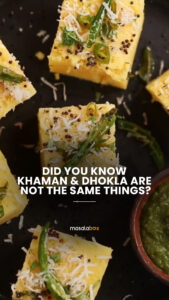Homemade Food Delivery – Masala Box
Masala Box, as a homemade food delivery initiative was launched in August, 2014 in the city of Kochi, India. The underlying theme behind the very idea and genesis of Masala Box has been the following.
(1) The revival of dying traditional cuisines, local food, arts and crafts.
(2) Use of healthy ingredients and Eco-friendly/biodegradable packaging.
(3) Providing a credible and robust platform to budding women entrepreneurs as well as local artisans.
(4) Contributing to various social initiatives in society by donating a part of the proceeds from every sale.


We have, in the last couple of years, provided hundreds of, home chefs who can whip up authentic and scrumptious delicacies, an amazing platform to showcase their latent talent. It has always been our endeavour to offer variety at competitive price points and assured quality. To this effect, we have not just created a robust logistics and quality framework but also brought into play cutting-edge technologies. While our focus hitherto has been on promoting budding home-based chefs and the market for homemade food delivery; we believe that the logical next step would be to use our growing infrastructure network to promote the plethora of traditional cuisines, handicrafts, textiles and other homemade items which are confined to the unorganized sectors of the economy.
Reinventing Ourselves….
The village/cottage industry and the unorganized sectors in India have immense potential with a cornucopia of skills by and large hidden from the world. We believe that Masala Box can, not just leverage this abundance and diversity as part of its growth story but also help us remain true to our fundamental goals of providing sustainable and equitable opportunities to home based chefs/cooks as well as food producers and manufacturers, artisans and other craftsmen from the unorganized sectors of the country.


The thriving social set in India’s tier 1 and tier 2 cities is today on the lookout for exotic, speciality and ethnic food products, fabrics, handicrafts that can be sourced from various places of the country. This resonates with how we perceive and would like to build Masala Box in the immediate future as the foremost ethnic food marketplace by aggregating chefs, food producers and small retailers onto a single platform.
We will not just curate and onboard ethnic produce but also leverage our technology framework and branding to provide them access to a wider marketplace. By doing so we intend to support and nurture these valuable Indian traditions by providing them with a ready market as well as stainable employment and fair prices for their creators. This, we believe will go a long way in enriching their 

New Beginnings
This is an exciting new phase for us and we’d love to hear from you on your ideas, suggestions or ways in which you’d like to participate in our growth story.”
For ordering home cooked food online Visit: www.masalabox.com








